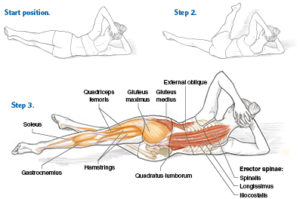Pilates is a good exercise choice for many seniors

Pilates, if done correctly, can help with many age-related fitness/health issues. | THINKSTOCK IMAGES
It’s no secret Pilates has many benefits for individuals of all fitness levels. In fact, Pilates builds core strength as it targets the entirety of your torso, from your hips to your shoulders. Back and stabilizing muscles also benefit from doing Pilates, which lead to better posture and coordination.
Since opening my own Pilates studio (in Corvallis, Oregon), many have inquired if seniors can do Pilates. My answer is absolutely yes!
Pilates is a system of exercises using either special apparatus or mat, designed to improve physical strength, flexibility, and posture, and enhance mental awareness.
“Pilates is perfect for older adults because it does not have the impact on the body that other forms of exercise do, and is not nearly as severe on the joints as most workouts are,” says Ellie Herman, owner of several Pilates studios, and a renowned Pilates instructor and author.
Increased control and stability is crucial for older adults as it can help them improve much of their functional movement, including balance and posture. This is exactly perfect for seniors as they undergo changes in their body such as vertigo and bone health.
Pilates also helps with a variety of age-related ailments. Arthritis sufferers benefit because the gentle mid-range movements decrease the chance of joints compressing while maintaining the range of motion around them.
Pilates has also been documented to slow or reverse the effects of debilitating diseases like Parkinson’s and multiple sclerosis. The mid-range motion of the exercises can help people overcome rigidity and become more limber. It can even help with brain traumas like a stroke.

Increased control and stability is crucial for older adults as it can help them improve much of their functional movement, including balance and posture. For that reason, Pilates can be a good exercise choice for seniors. |
That being said, when I work with senior clients, the key is modification. It is very important to recognize that older people will not be able to do the exact movements as their younger counterparts. A good instructor will offer cues for exercise modifications, and most classes are small enough that some individual instruction can be expected.
Another option for the senior client is, to begin with, private classes. Private instruction is offered at most Pilates studios. This will ensure a solid foundation in the basic movement principles of Pilates, and make it easier for an instructor to tailor modifications to a student’s needs.
Here are three exercises which can be beneficial to seniors and can easily be done at home:
Mermaid
The Mermaid is a great movement for older adults because it will lengthen and stretch the side body. To start, sit on your mat with both legs folded to the left side. Place the right hand on the floor to give the body support when sitting up. While keeping the left shoulder down, extend the left arm straight up and lengthen the spine as the body stretches to the side. The opposite (support) hand will move farther away from the body to increase the stretch but be sure your ribs aren’t popping forward. Try to keep the core engaged here.
To return back to start, send the left sit bone down and then engage the core to bring the torso up. Repeat on the other side to complete the full movement.
Side Leg Circles
 Side circles can improve hip joint flexibility and improve balance. To perform a side circle, lay on your side and extend the top leg towards the ceiling (without causing discomfort). The leg will then move counterclockwise in small circles. And then clockwise in small circles. Lower leg and switch sides to reap the full-benefits of this Pilates movement.
Side circles can improve hip joint flexibility and improve balance. To perform a side circle, lay on your side and extend the top leg towards the ceiling (without causing discomfort). The leg will then move counterclockwise in small circles. And then clockwise in small circles. Lower leg and switch sides to reap the full-benefits of this Pilates movement.
Swan
Start lying on the mat face down. Keep your arms close to your body as you bend your elbows to bring your hands under your shoulders. Shoulders should be away from the ears.
The legs are usually together, but it is acceptable to do this exercise with the legs shoulder-width apart.
 Engage your abdominal muscles, lift your belly button up away from the mat. The abdominals remain lifted throughout the exercise to engage the core.
Engage your abdominal muscles, lift your belly button up away from the mat. The abdominals remain lifted throughout the exercise to engage the core.
Inhale: Lengthen your spine, sending energy through the top of your head as you press your forearms and hands into the mat to support a long upward arc the upper body.
The elbows should be close to the body, the head stays in line with the spine, and the hips stay on the mat.
Protect your lower back by sending your tail bone down toward the mat.
Exhale: Keep your abdominals lifted as you release the arc, lengthening your spine as your torso returns to the mat in a sequential way: low-belly, mid-belly, low-ribs and so on.
Repeat Swan 3 to 5 times using an even, flowing breath to support the movement.

Recent Comments